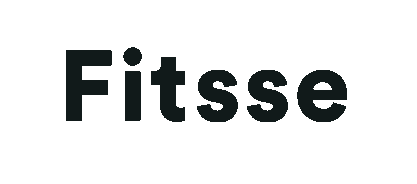If you’ve been putting in the work at the gym or in your home workouts but aren’t seeing the results you expect, you’re not alone. Many fitness enthusiasts, whether beginners or seasoned athletes, eventually hit a workout plateau. This happens when your progress slows or stalls despite consistent effort. But don’t worry—a plateau isn’t the end of your journey. It’s a signal that your body has adapted to your current routine, and it’s time to shake things up.
Here are five effective tips to help you push past the plateau and reignite your progress.
1. Reassess Your Goals and Routine
When you first started your fitness journey, you likely set specific goals—maybe it was to lose weight, build muscle, or improve your endurance. Over time, as you hit those targets, your body adapted to the demands you placed on it. That’s great! But if you’re still doing the same exercises, reps, or weight loads that worked six months ago, it’s no wonder you’ve plateaued.
What to Do:
- Evaluate Your Routine: Look at your workout program. Are you focusing too much on one area while neglecting others? For example, if you’re always doing cardio but skipping strength training, your body may need a new challenge.
- Set New Goals: Your initial goals might no longer be relevant. If you’ve mastered running a 5K, aim for a 10K. If you’ve been lifting the same weight for weeks, try to increase it incrementally.
- Incorporate Periodization: This is a structured way to vary your training intensity and focus. For instance, alternate between weeks of heavy lifting and weeks of lighter, high-rep exercises.
Pro Tip: Keep a workout journal. Tracking your progress helps you identify patterns, weaknesses, and opportunities for improvement.
2. Change Your Training Variables
One of the most common reasons for hitting a plateau is doing the same workouts repeatedly. Your body thrives on adaptation, and when it no longer feels challenged, progress stalls. To keep your muscles guessing, tweak your training variables—this includes intensity, volume, frequency, and type of exercise.
What to Do:
- Increase Intensity: Add more weight to your lifts, increase your running speed, or try high-intensity interval training (HIIT).
- Modify Volume: If you’re used to doing 3 sets of 10 reps, try 4 sets of 8 reps with heavier weights, or 2 sets of 15 reps with lighter weights.
- Switch Exercises: Swap out old favorites for new moves. For example, replace bench presses with dumbbell chest presses or running with rowing.
- Try Supersets or Drop Sets: These advanced techniques can push your muscles to fatigue, promoting growth and strength. A superset involves performing two exercises back-to-back without rest, while a drop set involves reducing the weight after each set and continuing to failure.
Pro Tip: Keep your rest periods between sets shorter if you’re focusing on endurance or longer if your goal is to lift heavier.
3. Focus on Nutrition and Recovery
Many people underestimate the importance of nutrition and recovery in breaking through plateaus. If you’re not fueling your body correctly or giving it enough time to repair, your progress will stagnate no matter how hard you train.
What to Do:
- Optimize Your Diet:
- Increase your protein intake to support muscle repair and growth. Aim for 1.2-2.0 grams of protein per kilogram of body weight.
- Don’t skimp on carbs, especially if you’re doing high-intensity workouts. Carbs provide the energy your body needs to perform and recover.
- Include healthy fats for hormonal balance and overall health.
- Stay Hydrated: Dehydration can reduce your strength, endurance, and recovery speed. Aim for at least 2-3 liters of water daily, more if you sweat heavily.
- Prioritize Sleep: Recovery happens during rest. Aim for 7-9 hours of quality sleep per night to allow your body to repair and grow stronger.
- Consider Active Recovery: On rest days, engage in light activities like yoga, walking, or swimming to promote blood flow and reduce muscle soreness.
Pro Tip: Use a fitness tracker or app to monitor your calorie intake, macros, and hydration levels to ensure you’re meeting your body’s needs.
4. Seek Professional Guidance
Sometimes, breaking through a plateau requires an expert’s eye. Personal trainers, coaches, or even experienced workout partners can provide valuable insights and techniques to improve your performance.
What to Do:
- Hire a Trainer: A certified personal trainer can design a customized program tailored to your goals and needs. They can also help you identify and correct poor form, which might be limiting your progress.
- Join a Class: Group classes like CrossFit, spin, or boot camp can introduce you to new exercises and techniques while providing a motivating environment.
- Get a Fitness Assessment: Many gyms offer assessments to evaluate your strength, endurance, flexibility, and body composition. These metrics can highlight areas that need improvement.
Pro Tip: If hiring a trainer isn’t feasible, follow reputable fitness experts online for tips and workout plans.
5. Strengthen Your Mental Game
Breaking through a plateau isn’t just physical—it’s mental. A lack of motivation, confidence, or focus can keep you stuck. Developing a resilient mindset is just as important as adjusting your workout routine.
What to Do:
- Visualize Success: Spend a few minutes before each workout picturing yourself achieving your goals. Visualization can improve focus and performance.
- Set Mini-Goals: Breaking a big goal into smaller milestones keeps you motivated. For example, instead of saying, “I want to deadlift 200 pounds,” aim to add 5 pounds every two weeks.
- Stay Positive: Celebrate small wins and remind yourself of how far you’ve come. This keeps you motivated to push harder.
- Surround Yourself with Support: Workout buddies, online communities, or family members can provide encouragement and accountability.
Pro Tip: Incorporate mindfulness practices like meditation or deep breathing to reduce stress and improve focus during workouts.
Conclusion
Hitting a workout plateau can be frustrating, but it’s also an opportunity for growth. By reassessing your goals, tweaking your routine, prioritizing nutrition and recovery, seeking guidance, and sharpening your mental game, you can break through and reach new heights in your fitness journey.
Remember, progress isn’t always linear. Embrace the process, stay consistent, and celebrate every step forward. Your plateau is just a temporary stop on the road to achieving your ultimate fitness goals.
Consider incorporating technology into your fitness routine to help break through plateaus. Wearable fitness trackers and smartwatches can provide real-time feedback on your workouts, helping you adjust intensity and monitor progress more effectively. Additionally, exploring virtual fitness classes or apps can introduce new exercises and techniques, keeping your routine fresh and challenging.








Hitting a workout plateau can be challenging, but it’s a great chance to reassess and evolve your fitness journey. By adjusting your goals, routine, and mindset, and focusing on nutrition and recovery, you’ll be well-equipped to push through and see continued progress. Keep embracing the journey and celebrate all your achievements along the way!